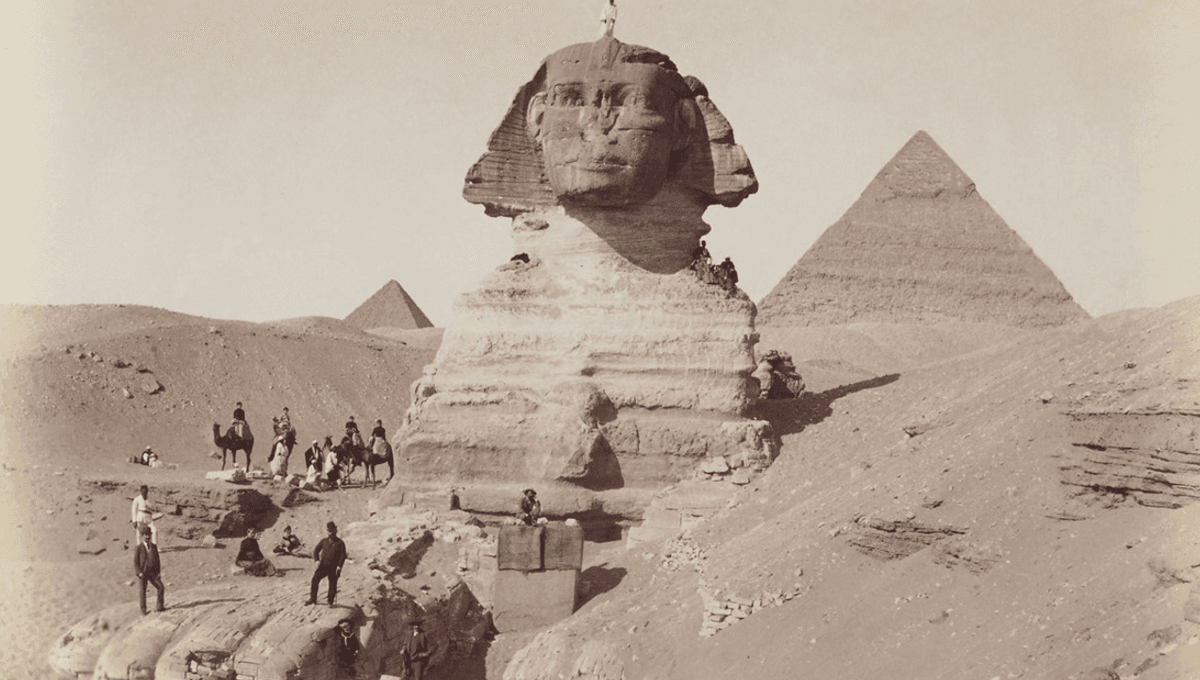
It’s easy to see why the Great Sphinx of Giza – a giant stone statue in the middle of the desert resembling ancient pharaoh Khafre but with the body of a lion – has been the subject of a number of crank theories over the years.
Among the pseudo-scientific theories and conspiracy theories are some fun ones, which you’d expect as they’re having to compete with an already quite wild and interesting history of Ancient Egypt. One such idea, known as the “Sphinx water erosion hypothesis”, has it that the Sphinx is far older than we thought, dating back farther than 7000 BCE.
This attracted attention, as it would be older than any Egyptian civilization that we know of by around 3,000 years. According to the team behind the theory, weathering seen on the Sphinx suggested that it had gone through a prolonged rainy period, indicating it was already built before (or was built during) a rainy period from 12,000 or 10,000 to about 5,000 years ago. However, this overlooked evidence that gives us our best estimate of its real age at around 4,500 years, including other patterns of weathering, drainage of the Nile which could have produced this erosion, and that the Sphinx’s face resembles pharaoh Khafre, who lived 2603-2578 BCE.
One particularly evidence-less legend about the Sphinx is that buried underneath it, there is a “Hall of Records” where an ancient civilization hid a trove of documents. Sometimes, the hall is said to contain Ancient Egyptian knowledge, while others really go for it and claim that civilization is Atlantis.
It’s a bold claim, so surely there’s some evidence for it? Well, no. The source of the claim appears to be American faith-healer Edgar Cayce, who told people of the hall while in a trance, all while claiming to be the reincarnation of a high priest of Atlantis. According to Cayce, an entrance to the hall of records was located by the Sphinx’s right front paw.
That may be the stupidest paragraph you have read in a while, but brace yourselves, because – based on this compelling evidence – people have actually looked for the hall of records.
Outside of dreams, there is no evidence that the hall exists. Natural cavities, pits, and trapdoors have been found on the Sphinx, as well as a large hole at the top of the head which could have been used for fixing a headdress. But despite searches, no cavity has been found that could be a Hall of Records, just like you wouldn’t expect to find evidence for Hogwarts.
Source Link: What's Buried Beneath The Sphinx?